Opinion
The Gray Market: How My 9 Highly Specific Art-Industry Predictions for 2019 Worked Out (and Other Insights)
Our columnist evaluates the clarity of his crystal ball 12 months after he last gazed into it for answers about art's future.
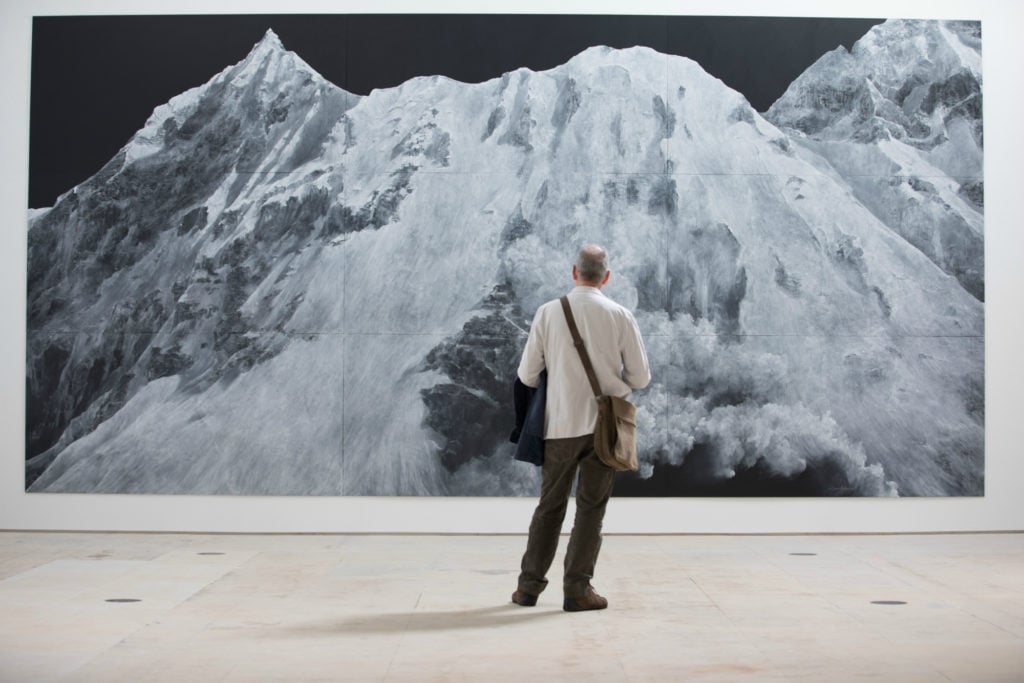
Our columnist evaluates the clarity of his crystal ball 12 months after he last gazed into it for answers about art's future.

Tim Schneider

It’s that time of year again: the week when I look back at my art-market predictions for 2019 to see where I was right, where I went wrong, and what we might be able to learn from both. Let’s jump right into it…
As a reminder, I didn’t take a stance on this just to troll the law-and-order crowd. Roughly a year ago, the Art Newspaper reported on credible chatter from Washington that the House of Representatives, in the wake of the fifth Anti-Money Laundering Directive hammered out by the European Parliament, could resurrect a dormant bill that would force art dealers to adopt some of the same fiscal-compliance, customer-due-diligence, and transaction-monitoring measures as banks and other financial institutions. If so, selling art privately would become a completely different business almost overnight.
Spoiler alert: it’s still the same business 12 months later. Congress took no meaningful action on the bill during that time, and now its members won’t return to work until 2020. Let’s see if the bill lurches out of the grave and back onto the House floor in the new year.
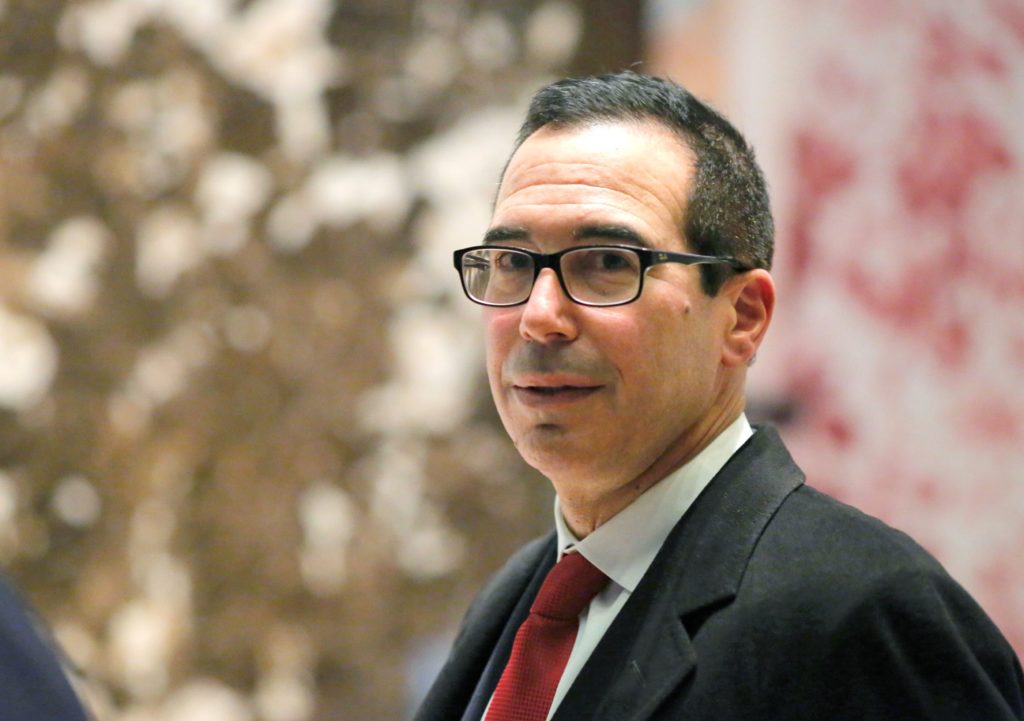
President Trump’s Treasury Secretary Steven Mnuchin, leaving Trump Tower in New York in 2016. Photo credit KENA BETANCUR/AFP/Getty Images.
For the uninitiated, a 1031 or “like-kind” exchange is the name for a type of transaction that allows certified investors in the US to avoid capital-gains tax when flipping certain physical assets. The key is that said investors have to funnel the sales proceeds from one such asset into the purchase of one or more similar assets within 180 days.
Artworks used to qualify for 1031 swaps, and it was damn good for the art business. The reason? The loophole incentivized deep-pocketed collectors—many, if not most, of whom are happy to sell almost anything once the value proposition gets juicy enough—to buy big again as soon as they decided to sell big.
But ever since the Trump tax cuts eliminated 1031 exchanges for all assets but (ahem) real estate in January 2018, the gears powering the top of the art market have gotten awful gummy. By fall 2018, dealers and auction houses were cursing Congress in private for the missile the new legislation blasted into their bottom line. It seemed plausible that this group might band together to start formally advocating to reverse the old order, especially while their lobbyists could whisper into the (theoretically) sympathetic ear of Treasury Secretary and collector Steven Mnuchin.
I was wrong. To my knowledge, art-market dealmakers have not launched a lobbying effort on this issue. But it isn’t because they’ve stopped losing money from the 1031’s disappearance. The fall 2019 Artnet Intelligence Report found that sales of works priced at $10 million and above plummeted 35 percent worldwide in the first half of the year, and New York’s fall auctions included only five works with estimates of $20 million or more—down from 22 such lots the previous year.
My guess is that everyone with skin in this game came to the conclusion that their constituency was too small to overturn the entrenched thinking on the 1031 exchange. So why blow money on a losing cause? Instead, they have turned their attention to a potential substitute, the Opportunity Zone. But so far, that has not proven to be a particularly viable solution either.
In mid-January 2018, Tate and the National Galleries of Scotland severed ties with Anthony d’Offay, the legendary dealer and ex officio curator of the 1,600-work Artists Rooms collection donated to the institutions by d’Offay himself, after three women accused him of sexual harassment and a fourth brought allegations of malicious communication. D’Offay denied all charges… and within three months, Tate and the National Galleries of Scotland renewed their relationship with him. The institutions justified the move by stating that investigations into the matter “produced no firm evidence” of wrongdoing.
On the market side, as my colleague Nate Freeman reported in Wet Paint last month, curator Jens Hoffmann has quietly reappeared on the industry’s periphery roughly two years after being dismissed by the Jewish Museum following an investigation into allegations of sexual harassment. Along with launching his own nebulous project in New York and a space in Bogotá, Colombia, Hoffmann landed at least two external gigs this year: curating a group sculpture exhibition at Cristina Guerra Contemporary Art in Lisbon, and penning an essay for a solo exhibition of Anna Weyant’s subtly surreal paintings at Lower East Side gallery 56 Henry.
I hate to say it, but expect more where this came from in the years ahead.
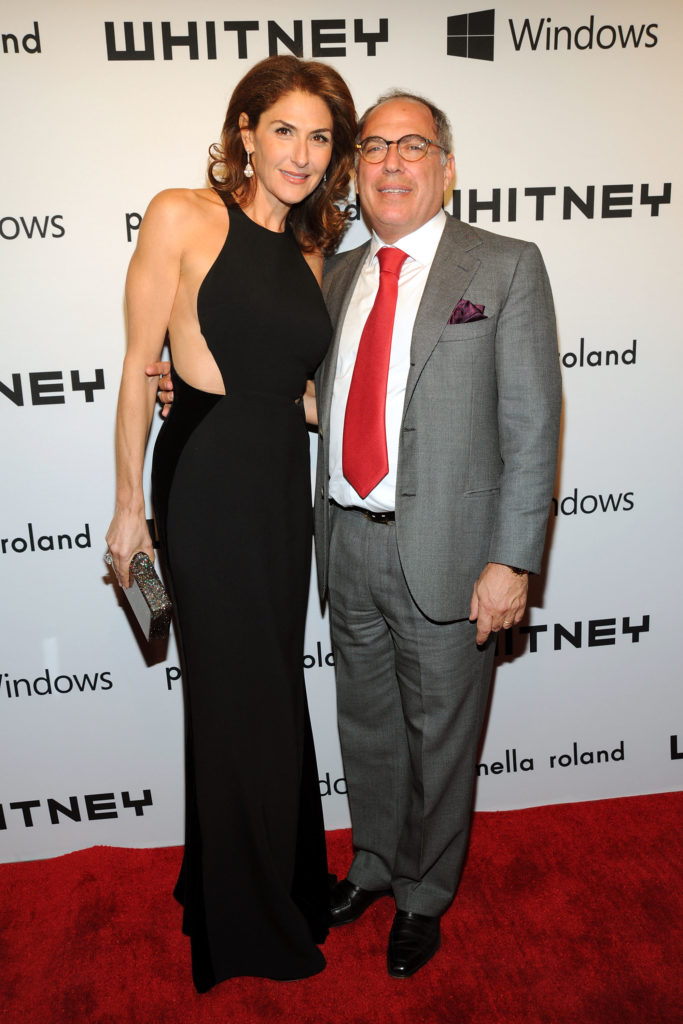
NEW YORK, NY – DECEMBER 11: Allison Kanders and Warren Kanders attend 2012 Whitney Gala at The Whitney Museum of American Art on December 11, 2012 in New York City. (Photo by Ben Gabbe/Getty Images)
Honestly, I’m still nearly as stunned by Warren Kanders’s resignation from the board of the Whitney as I would be if I suddenly woke up tomorrow with the ability to breathe underwater. It took seven months of coordinated protests, open letters from museum staff as well as a coalition of artists and scholars, a virtuosic and consciousness-shifting Artforum essay, the publicly announced withdrawal of eight participating artists from the Whitney Biennial midway through its run, and perhaps some behind-the-scenes lobbying from other board members, but the pressure over Kanders’s ownership (first reported by Hyperallergic) of Safariland, a manufacturer of tear gas and other defense products, finally forced him out.
It’s undeniable that Kanders’s exit shifted the paradigm in the fiery debate over the need for strictly ethical patronage of the arts. But whether it opens the floodgates to more boardroom dismissals, or becomes a historical exception, will depend on time, activism, and—perhaps most importantly—powerful people’s tolerance for controversy. The only thing we can be sure of for now is that this isn’t over.
The most weathered cliche in the auction business is that “quality wins out,” meaning that truly great works perform well under the hammer regardless of the surrounding context or mood. Which is true… but only to an extent. There’s a big difference between a particular work selling, or even selling for a healthy price, and the same work exploding through the atmosphere into the cosmos. To get a truly historic result, you don’t just need the right work. You need the right work at the right time, i.e. one in which multiple buyers are ravenous for the exact thing on offer, and preferably while a booming global economy reassures them that chasing a trophy is a fine idea.
Those ingredients blended together perfectly in May 2018, when Kerry James Marshall’s monumental canvas Past Times (1997) set a new high mark for a living African American artist’s work by changing hands for a premium-inclusive $21.2 million at Sotheby’s New York. But even though plenty of pieces by such artists sold for handsome sums at auction in 2019, the year saw neither a great enough piece consigned, nor a sufficiently large pool of buyers clamoring for it, to top Marshall. Which makes this prediction a textbook example of how trying to ride momentum in a simplistic way can crash you straight into a garbage truck.
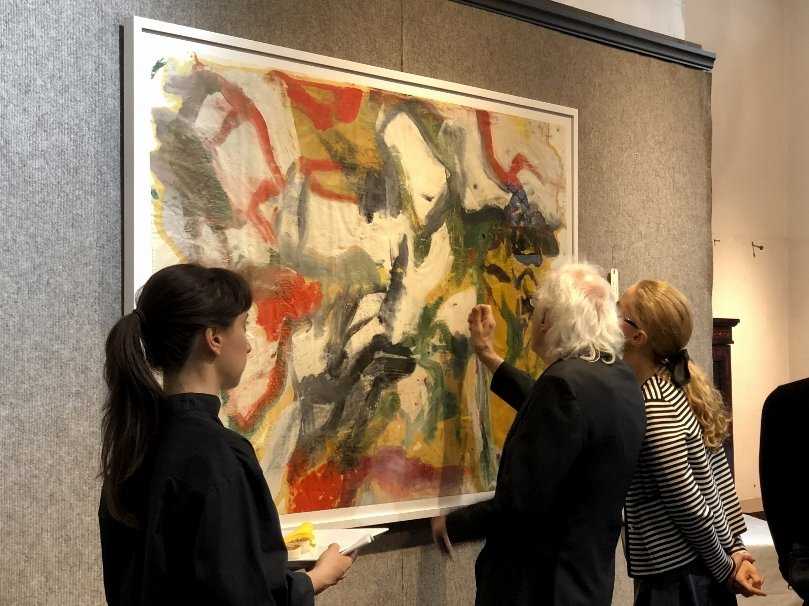
Willem de Kooning Untitled II (ca. 1970). Photo: courtesy of David Killen Gallery.
If you’re wondering what time I made this prediction, the answer is apparently “amateur hour.”
I stand by my underlying reasoning (which I unpacked at length here, under the header “Making a Killen”): When something can’t be definitively proven, rich people with skin in the game can usually bankroll their preferred outcome into being. This is especially true in cases like art attributions, where, as long as the work in question doesn’t fall into the Beast Jesus zone of execution, literally no one is worse off for the change. Even the scholars who disagree can get speaking gigs, media appearances, and even published articles out of their dissent!
Instead, my problem was the timeline. It normally takes years to marshal enough scholarly consensus to transform a work of once-dubious authorship into a bona fide masterwork… and juice the resale price in the process. To take the most famous case, Salvator Mundi needed eight years of wrangling to evolve from being a $10,000 work attributed to Boltraffio to a $75 million to $80 million work by Leonardo.
In other words, I still think “properly incentivized” experts will one day attach Willem de Kooning’s name to the works on paper that dealer David Killen bought from among the contents of a random Garden State storage locker. But it was never going to happen within 12 months, and thinking otherwise was naive on my part.
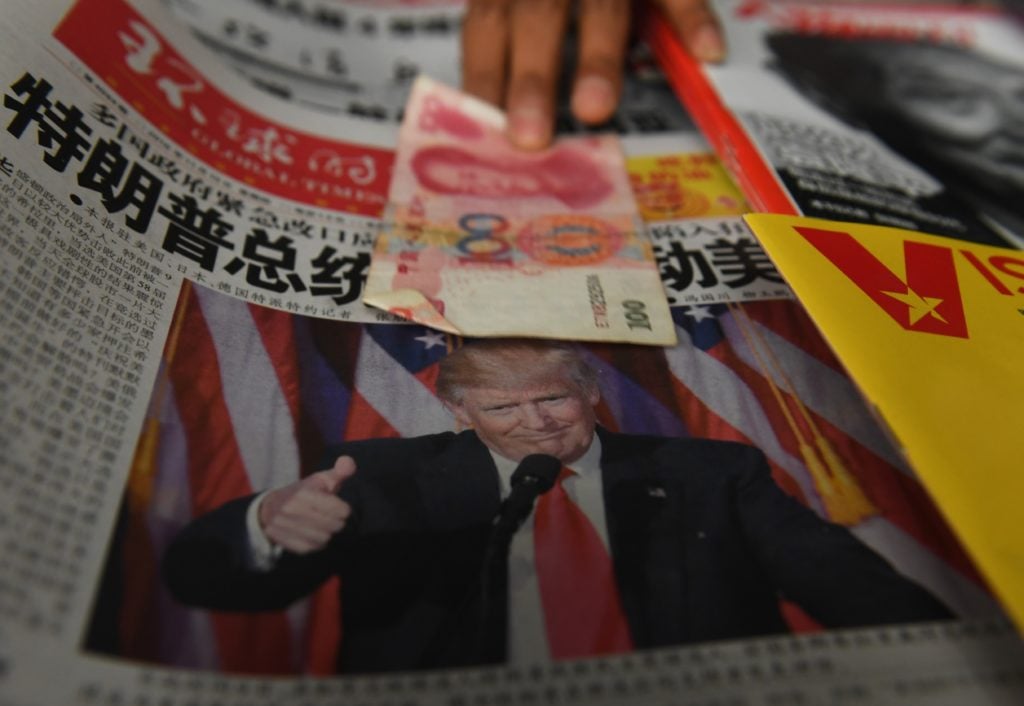
A vendor picks at a news stand in Beijing on November 10, 2016. Photo: Greg Baker/AFP/Getty Images.
This month marked the 19th in the US’s self-defeating trade war with China, and the Trump administration’s haphazard strategy has put Chinese art and antiquities through more back and forth than a mattress at an hourly-rate motel. The Art Newspaper reported that, last July, officials placed those goods on a list of imports slated to receive a 10 percent tariff in September 2018. The administration then ratcheted up the pain by increasing the proposed tariff to 25 percent the following month, until an eleventh-hour lobbying campaign by dealers and their allies earned art and antiquities of Chinese origin an exemption before the deadline.
The reprieve didn’t last. This May, Team Trump stuck Chinese art and antiquities back inside the 25 percent tariff cannon set to fire at the People’s Republic in September 2019, before adjusting the applicable duty twice in August—first, down to 10 percent (while simultaneously refusing to include art and antiquities among the goods whose tariffs would be delayed until mid-December), then up to 15 percent two weeks later.
That last tariff came into force as planned in September. And to close the loop on this tangled narrative, the trade deal struck between the two superpowers earlier this month only cuts the import tax on Chinese art and antiquities in half, to 7.5 percent, rather than eliminating it. Which is another eminently logical decision by a president who recently emphasized at a press conference that he’d spurred the Environmental Protection Agency into “looking very strongly into sinks and showers” because water pressure is allegedly so bad that “people are flushing toilets 10 times, 15 times.”
This is a case where I’m happy to be wrong. Although Venice wasn’t exactly a drama-free zone during the latest biennale, the real threats to the exhibition’s stakeholders were runaway cruise ships and perilous floods, not right-wing vandals. (The only thing that came close was the delayed opening of the Venezuela Pavilion, pushed back by unrest at home.) Fortunately, not even those dangers seem to have damaged any of the work in the show, making it a welcome deviation from the negative trend established by criminal mischief at last year’s Skulptur Projekte Münster and the politically driven banishment of an installation from documenta 14.
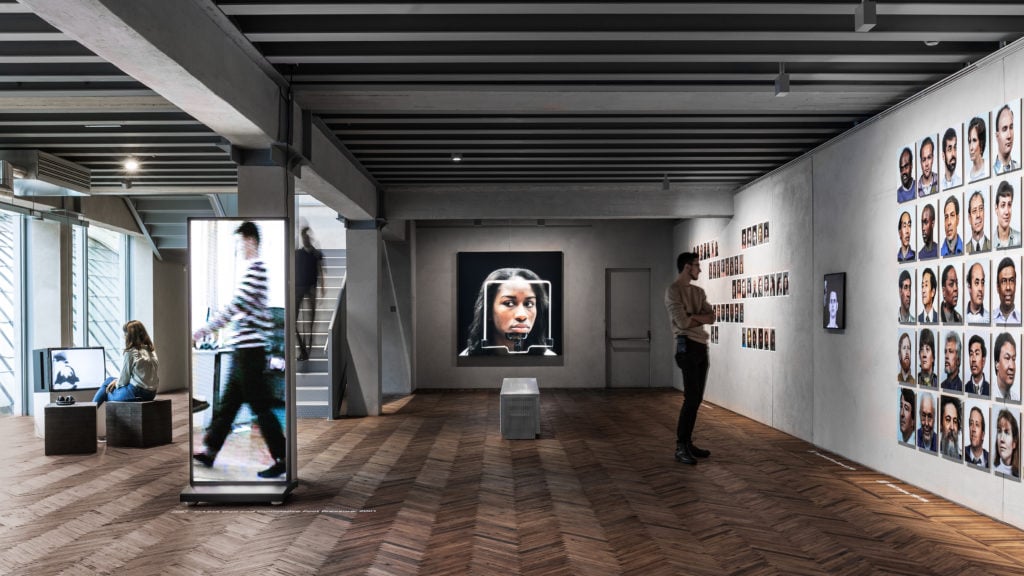
Exhibition view of “Kate Crawford, Trevor Paglen: Training Humans” Osservatorio Fondazione Prada, through Februrary 24, 2020. Photo by Marco Cappelletti, courtesy Fondazione Prada.
Hey, remember those 10 months or so when blockchain was going to revolutionize the art industry, before people started realizing that it’s largely bad technology that reinforces most of the problems it proposes to solve? That was fun, huh?
Although blockchain was arguably at peak visibility when I made this prediction, the pivot toward artificial intelligence had begun—albeit in the worst possible way, courtesy of the frenzy that ensued after someone paid an absolutely stupid price for an algorithmically generated gimmick by French design collective Obvious in October 2018. But by mid-February 2019, the Metropolitan Museum of Art unveiled multiple A.I. projects wrung from a joint partnership with Microsoft and MIT. Shortly after, machine learning was the subject of a panel discussion at the inaugural Frieze Los Angeles and played a role in a solo talk by artist Tishan Hsu at Art Basel Hong Kong.
The wave only intensified as the year carried on. Christie’s annual daylong Art + Tech Summit, arguably the for-profit art industry’s most ambitious tech event, took “The A.I. Revolution” as its subject in June. (The previous year’s focus? You guessed it: “Exploring Blockchain.”) A few weeks earlier, the House of Electronic Arts in Basel, one of the world’s premier institutions for new media, opened “Entangled Realities: Living With Artificial Intelligence” in its coveted programming slot coinciding with Art Basel, and San Francisco’s de Young Museum announced a forthcoming show titled “Uncanny Valley: Being Human in the Age of A.I.”
The art world’s engagement with machine learning even sparked real change in the wider world. In September, the researchers behind ImageNet, the colossal online database used to “train” the software in many machine-learning ventures, agreed to prune more than half of the 1.2 million images in its “people” category after artist Trevor Paglen and A.I. researcher Kate Crawford exposed embedded algorithmic biases—see: photos depicting people of color disproportionately tagged with terms like “wrongdoer”—rampant within them via their collaborative app, ImageNet Roulette (which, by the way, was on view in another A.I.-centric institutional show: their own, at the Fondazione Prada’s Milan Osservatorio).
Meanwhile, gone are the dedicated blockchain conferences by major players held during Miami Art Week, the bidding wars for Cryptokitties at charity auctions, the daily avalanche of pitches in my inbox from blockchain x art startups… and almost any other sign that this was once a technology that credible members of the art industry saw as a potential game-changer. As far as I can tell, the most consequential blockchain-based art story in the fourth quarter of 2019 was a modest announcement that the Winston Art Group would offer free vetting services for artworks whose owners agree to list them on Artory’s blockchain title registry. The gold rush is over, folks.
All told, the whiplash from blockchain obsession to A.I. fever embodies just how fast, and how abruptly, trends change in the art world. Let’s see if I can do a better job of anticipating the next ones when I make my 2020 predictions in another week.